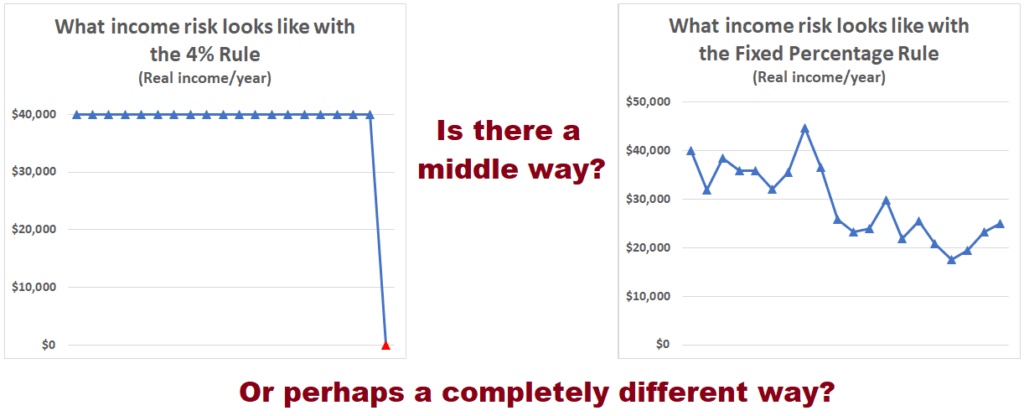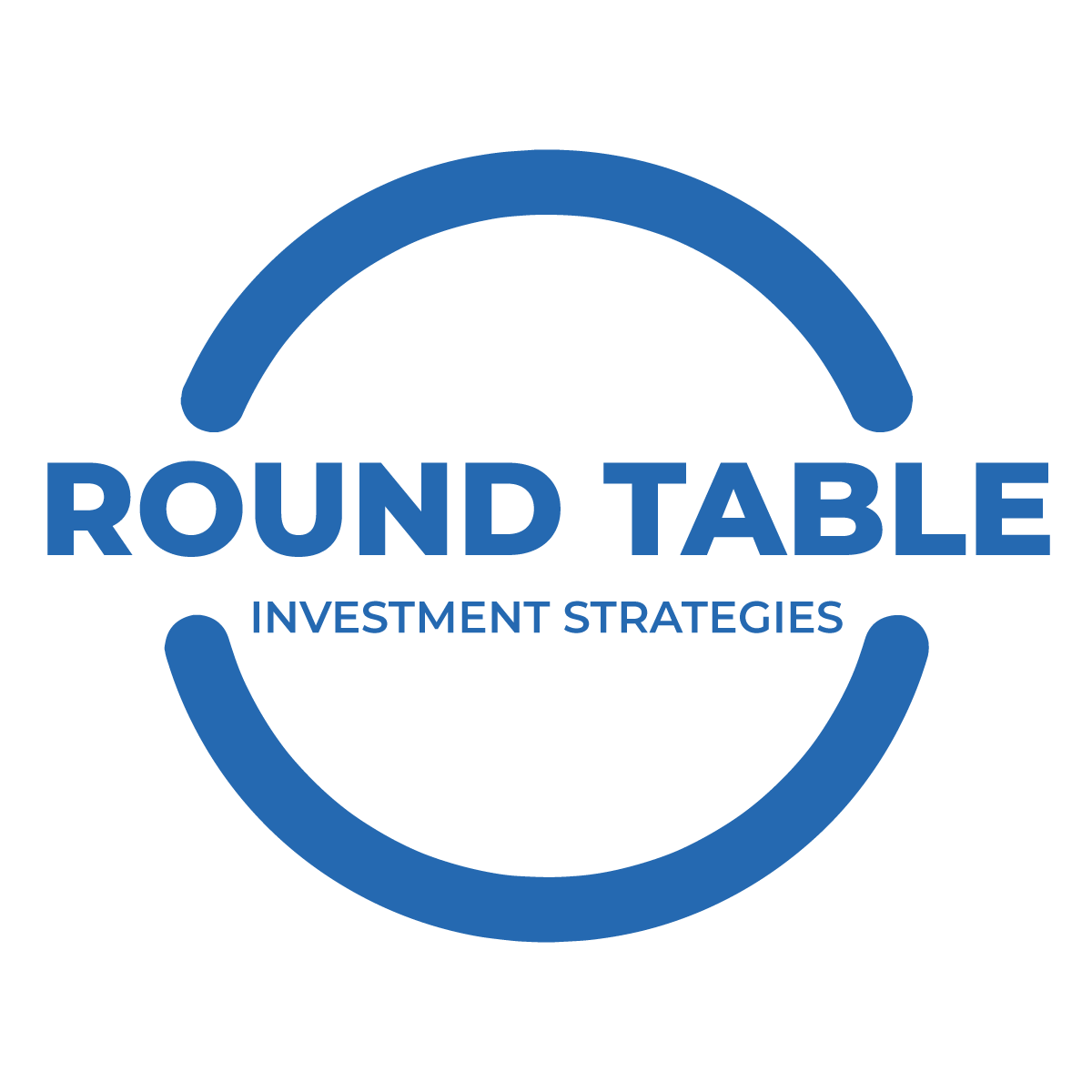“On Retirement Income” series:
- A 4% Rule Fable
- The 4% Rule Launches a Bigger Discussion
- From Mindless Inconsistency to Mindless Consistency
- Stock/Bond Portfolios and Sequence-of-Returns Risk
- Goals-Based Investing Starts with Goals
- Guaranteed Income Sources (Social Security, Etc.)
- How Guaranteed is Guaranteed Income?
- Get Real Income by Getting TIPSy
- TIPS Q&A
- More to come…
Bob and Fred’s Excellent Adventure
Having read the first article in this series, identical twin brothers Bob and Fred feel frustrated by the permanent discrepancy stemming from Rule of Thumb (ROT) Investment Advisors’ mindless application of the 4% Rule. So, they hop into their time machine and travel back to the start of 2022 to try a different approach to retirement income and investment. (Why they don’t use their time machine to simply avoid investing in 2022 is a plot hole for which the narrative arc of this article series wishes to convey its gratitude.)
Bob, still wishing to retire first with $1,000,000, decides to throw the pendulum all the way in the opposite direction by hiring Supremely Consistent Asset Managers [acronym redacted]. Supremely Consistent AM starts off with a setup familiar from Bob’s time with ROT: a 60/40 portfolio and a 4% withdrawal rate (i.e., $40,000 in year 1). SC Asset Managers informs Bob he can continue to take 4% every year with no risk of ever running out of money. This sounds to Bob like a good arrangement! He sets up his annual budget accordingly.
A year later, of course, Bob’s portfolio value has declined to $796,000[1] and Fred is also ready to retire. The introduction of a time loop having promulgated no butterfly effects, the uncanny coincidence of Fred also having $796,000 to invest remains intact. His brother convinces him to hire Supremely Consistent Asset Managers as well. SCA Managers invests Fred in a 60/40 portfolio and instructs him to withdraw $31,840 (4% of $796,000). They rebalance Bob’s portfolio to 60/40 and instruct him to withdraw $31,840 in 2023 as well.
Here is a summary of the situation at this juncture:
- True to their name, Supremely Consistent has the identical twins in identical portfolios with identical instructions to withdraw identical dollar amounts of retirement income. If the goal of jumping in the time machine was to eliminate ROT’s permanent 34% differential between Bob’s income and Fred’s, then…mission accomplished!
- As they promised, Supremely CAM’s methodology (known as a “Fixed Percentage Rule”) ensures the brothers’ portfolios will never run out of money,[2] since the withdrawal amount will reset each year to 4% of whatever is left at the time.
- Slight problem, though: Bob’s annual budget has taken a massively painful hit! Given the 6.5% inflation rate in 2022, his real (i.e., inflation-adjusted) income has declined by more than 25%!
Bob and Fred’s Bogus Journey
In our last article, we noted that the 4% Rule essentially pretends to create safe income by ignoring the variability of the risk-asset portfolio from which the income is taken. The result is a strategy that is likely to produce stable, inflation-adjusted income throughout retirement, yet has a small but—we would humbly but insistently submit—non-negligible possibility of suddenly falling to $0!
This article’s Fixed Percentage Rule goes the opposite direction, making the annual income as volatile as the portfolio from which it is drawn. This at least has the advantage of making the riskiness of the approach explicit. Additional advantages include (a) eliminating the risk of seeing your income suddenly fall to zero and (b) potentially seeing your income increase substantially, if retirement timing is lucky and the portfolio does unusually well.
But the downside, to Bob’s chagrin, is that the income generated by this method can be very volatile indeed. Most folks have certain expectations (and career-long experience) of relative stability in their incomes, and they have organized their spending—or at least the inflexible core of their planned expenditures—around the assumption that their income will not vary too drastically.

Bob and Fred can’t help wondering…
- …whether there might be a “middle way” that allows for growth of income and assets but protects against disaster, without potentially having to absorb a massive (e.g., >25%) decline in income in a single year?
- …whether there might be a completely different approach that secures a stable, inflation-protected income without the risk of running out prematurely?
Thankfully, these imaginary retirees’ next step is to direct their imaginary time machine to Round Table Investment Strategies, where we have imaginary conversations with them to unpack our very real “Layer Cake” approach to retirement income and investing. Stay tuned to learn what we envision for Bob and Fred! (Or feel free to reach out to us for a sneak peek.)
[1] See this footnote in the first article for the math.
[2] Unless, of course, global stock and bond markets all go to zero. Which is a thing that can happen. But let’s not kid ourselves: No matter how robustly constructed, your retirement plan will not survive that eventuality. Heck, you yourself may not survive whatever precipitated that eventuality.

DISCLOSURES: All content is provided solely for informational purposes and should not be considered an offer, or a solicitation of an offer, to buy or sell any particular security, product, or service. Round Table Investment Strategies (Round Table) does not offer specific investment recommendations in this presentation. This article should not be considered a comprehensive review or analysis of the topics discussed in the article. Investing involves risks, including possible loss of principal. Despite efforts to be accurate and current, this article may contain out-of-date information, Round Table will not be under an obligation to advise of any subsequent changes related to the topics discussed in this article. Round Table is not an attorney or accountant and does not provide legal, tax or accounting advice. This article is impersonal and does not take into account individual circumstances. Reading this article does not create a client relationship with Round Table. An individual should not make personal financial or investment decisions based solely upon this article. This article is not a substitute for or the same as a consultation with an investment adviser in a one-on-one context whereby all the facts of the individual’s situation can be considered in their entirety and the investment adviser can provide individualized investment advice or a customized financial plan.
The data shown in this article is for informational purposes only and should not be considered as an investment recommendation or strategy, or as an offer to buy or sell any particular security, product, or service. Past performance may not be indicative of future results. While the sources of data included in any charts/graphs/calculations are believed to be reliable, Round Table cannot guarantee their accuracy.
